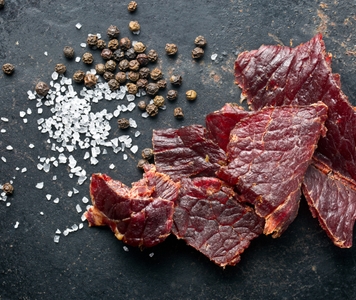Prioritization (MaxDiff)
Prioritization is one of those things that seems easy. But it’s often difficult to do in practice (people get overwhelmed once the list is more than 5 items). MaxDiff simplifies the task. It shows people a subset of items and asks them to pick the best and worst. This is done a few times, then mathematical modelling then generates a ranked list.
Portfolio Modeling (TURF)
Let's consider an ice cream vendor: stocking the most popular flavors might not be the optimal mix because a more niche flavor could reach a consumer who doesn't want a “mainstream” flavor. We've built a proprietary TURF algorithm that examines millions of possible combinations and identifies the variants that, when combined, give you the best chance of success.
Consumer Journey Mapping
Consumer Journey Mapping is an opportunity for us to unpack how consumers arrive at your category or your brand. From here, we identify key moments where they may be open to changing their category or brand choices.
Jobs to be Done
As we move through each day, we “do” numerous jobs - commuting, preparing food, cleaning our homes, planning for the future, etc. How do consumers identify a job that they need to do? How do they decide how they will “do” the job? Understanding your consumers’ jobs can inspire breakthrough innovation.
Brand & Category Metaphors
We've built a custom methodology that was inspired by Instagram. Using Dig’s proprietary image database and an interface inspired by Instagram, consumers answer questions using images. They build a collage that tells us how they feel about your category or brand, and they tell us why they selected those images.
Attitude & Usage
How do consumers perceive your category, your brand, and competitive brands? What are your competitive strengths and weaknesses? What opportunities are there to address your weaknesses or to play to your strengths? How do attitudes translate into usage? What opportunities are there to influence usage of your category or your brand?
Loading...
Browse related content

How We Helped Nestlé Improve Profitability and Focus Their Portfolio
After dominating the Premium Waters space for the past decade, Nestlé wanted to better understand how to serve evolving consumer needs and expectations.

How Coca-Cola Uses Upsiide to Reinvent Early-Stage Innovation
Upsiide, our proprietary research platform, is used as Coca-Cola’s global gate zero testing software. This is one example of the global team using Upsiide.

How Tillamook Country Smoker Used Our Restech Platform Upsiide to Build an Impactful Roadmap
We worked with Tillamook Country Smoker to help them understand their consumers better and future-proof their product roadmap.

How We Created a Global Innovation Testing Platform for a Bev-Al Category Leader
Using a mixture of Upsiide concept testing and qualitative co-creation sessions with friendship dyads, the client adapted a global product for the US market.